Last week in our story on dioramas, Clyde Berryman discussed how he became interested in motor racing, when as a child he was told about the prewar Grand Prix races while living in Tripoli. We therefore begin this series with his amazing diorama of the Tripoli Grand Prix, held at the Mellaha Circuit, in 1/43 scale.
Story and photos by Clyde Berryman
The Tripoli Grand Prix was a very ‘real’ piece of history to me growing up as a lad in 1960’s Libya. There were Italian expatriates who remembered the Grand Prix races of the 1930’s very well and who told vivid stories of the men and their cars who they had watched race and personally met.
The Uaddan Hotel, where many post-race celebrations and banquets reportedly took place, still existed as one of Tripoli’s finest hotels, was home to the Uaddan casino and a barber shop where my father took me for my haircuts.
The Governor of the pre-war Italian colony of Libya was Marshal Italo Balbo, already a world-famous aviator and an avid motorsport enthusiast who had the Mellaha circuit built as a permanent home for the Tripoli Grand Prix. The circuit made use of the existing main coast road between Tripoli and the town of Tagiura with a perimeter road which ran just above the seafront around some salt flats and an Italian military aerodrome. Its long straights made for a fast and dangerous course with sand particles blown across the track by the sea wind as it wound its way through groves of date palms.
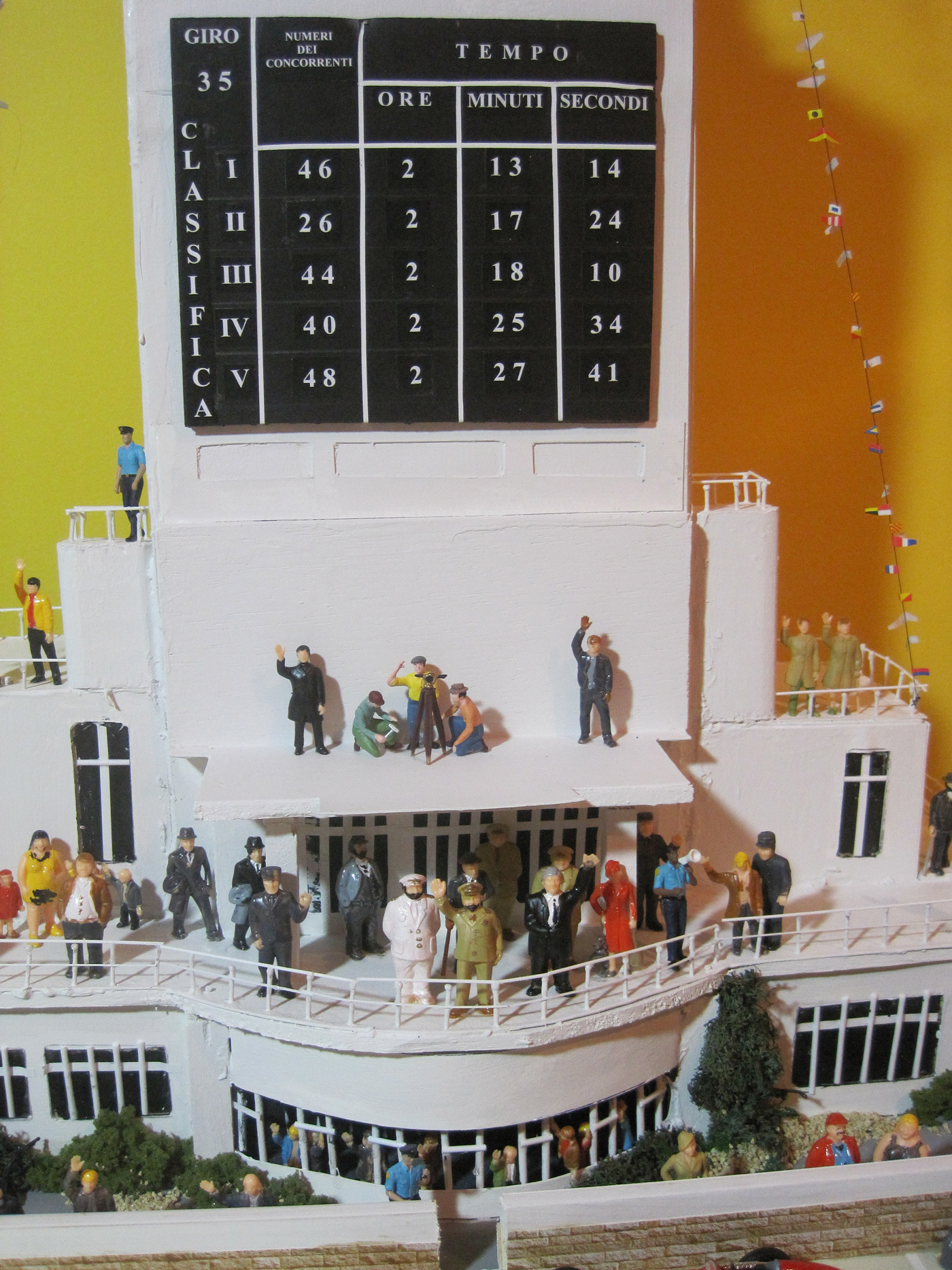
A close-up view of the timing scoreboard and VIP reviewing stand at the base of the race control tower.
The most distinguishing feature of the circuit was a tall, white, concrete control tower about 170 ft high, which had an advanced system of electronic timekeeping including a large black announcement panel on the front of the tower reminiscent of those found in train stations with panels which flipped up or down with white numbers giving train numbers and departure times – except here, it was car numbers and their running order in the race. Across from the tall control tower and extensive pit complex was an equally impressive concrete 10,000-capacity grandstand with a cantilevered roof to keep its race spectators in the shade from the hot Libyan sun. It was ‘state of the art’ for its time and a British driver even described Mellaha as the ‘Ascot of motor racing.’
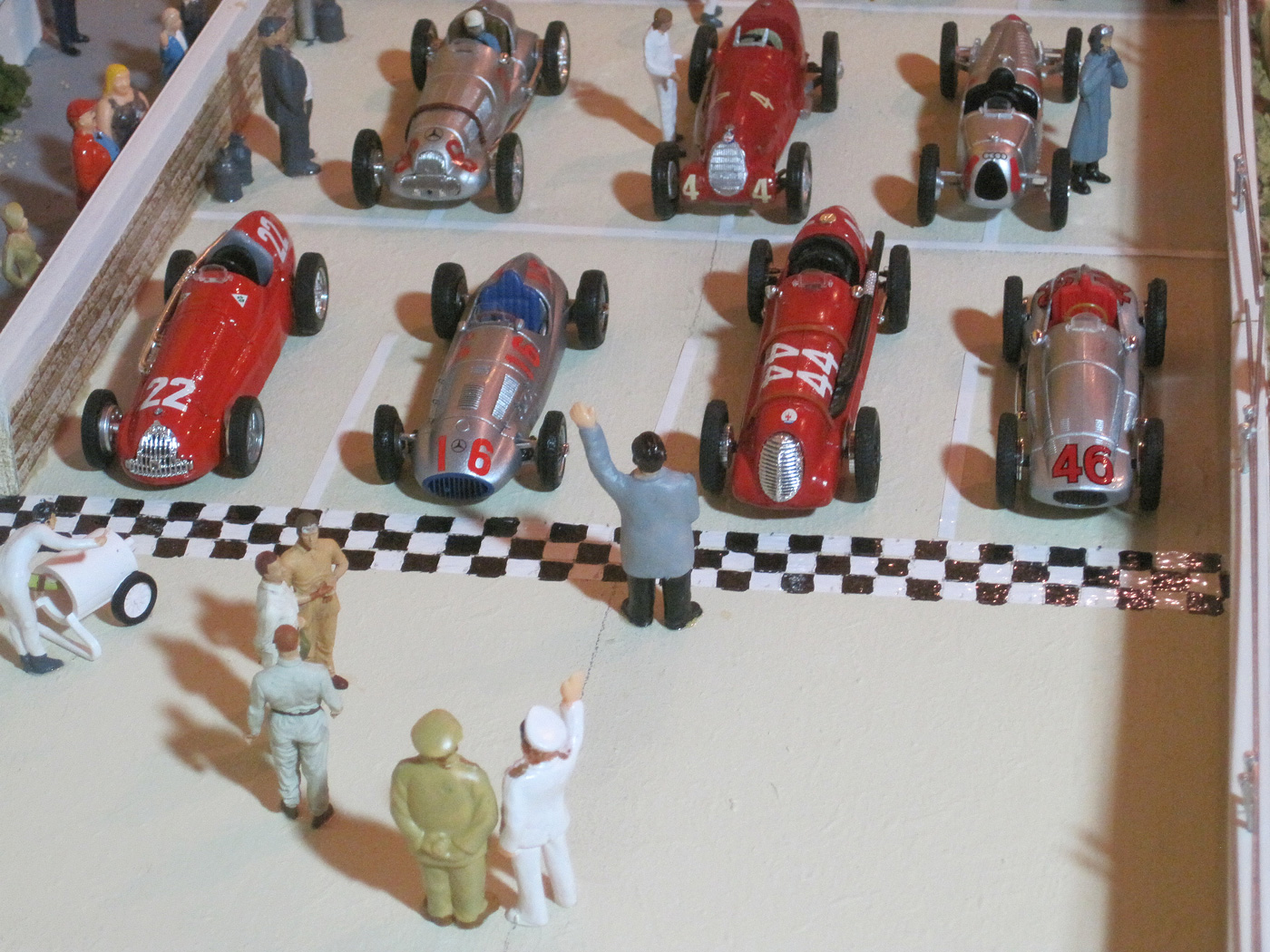
The front of the compressed ‘time-capsule’ starting grid with representative models of the cars which raced at Mellaha during the 1930s
The Tripoli Grand Prix took place at Mellaha from 1933 to 1940 early at the start of the Grand Prix season each year. Aside from the lavish victory celebrations, it engendered many stories from a supposedly ‘fixed’ lottery scandal, the public shaming of driver Achille Varzi by Marshal Balbo at an awards ceremony for having reportedly accepted ‘team orders’ imposed by his German team, and the alleged beginning of a drug habit by Varzi, encouraged by his mistress Ilse Pietsch (wife of driver Paul Pietsch) which would almost end his racing career. The driver who would become the acknowledged ‘King of Tripoli’ with more victories at Mellaha than any other was Mercedes-Benz’s mechanic-turned-driver, Herrmann Lang.
After the Allied victory and the defeat of the Axis in World War II, Libya came under the temporary control of the British before it was granted independence under a U.N. decree as a Kingdom with King Idris I of the Senussi tribe being named its leader. In the 1950s, the United States leased the land on which Mellaha was built from the Libyan government for the purpose of building Wheelus Air Base, a large training base which would also be able to accommodate large bombers and cargo planes. The airmen who initially were assigned to the base operated an amateur sports car club and raced on the old Mellaha circuit which they re-named ‘Busetta Raceway’ (a deformation of the Arabic name ‘Abu Seta’ for its location). Expansion and lengthening of the runways, however, soon necessitated the demolition of the tall race control tower. I recall being taken to Wheelus for several school picnics as a first and second grader which were held behind the concrete grandstand and near where a horseback and camel riding stable had been established. Horse and camel racing now took place on a remaining portion of the old track…and the smell of horse manure had essentially replaced that of castor oil for as long as any kind of racing still existed at the old Mellaha!
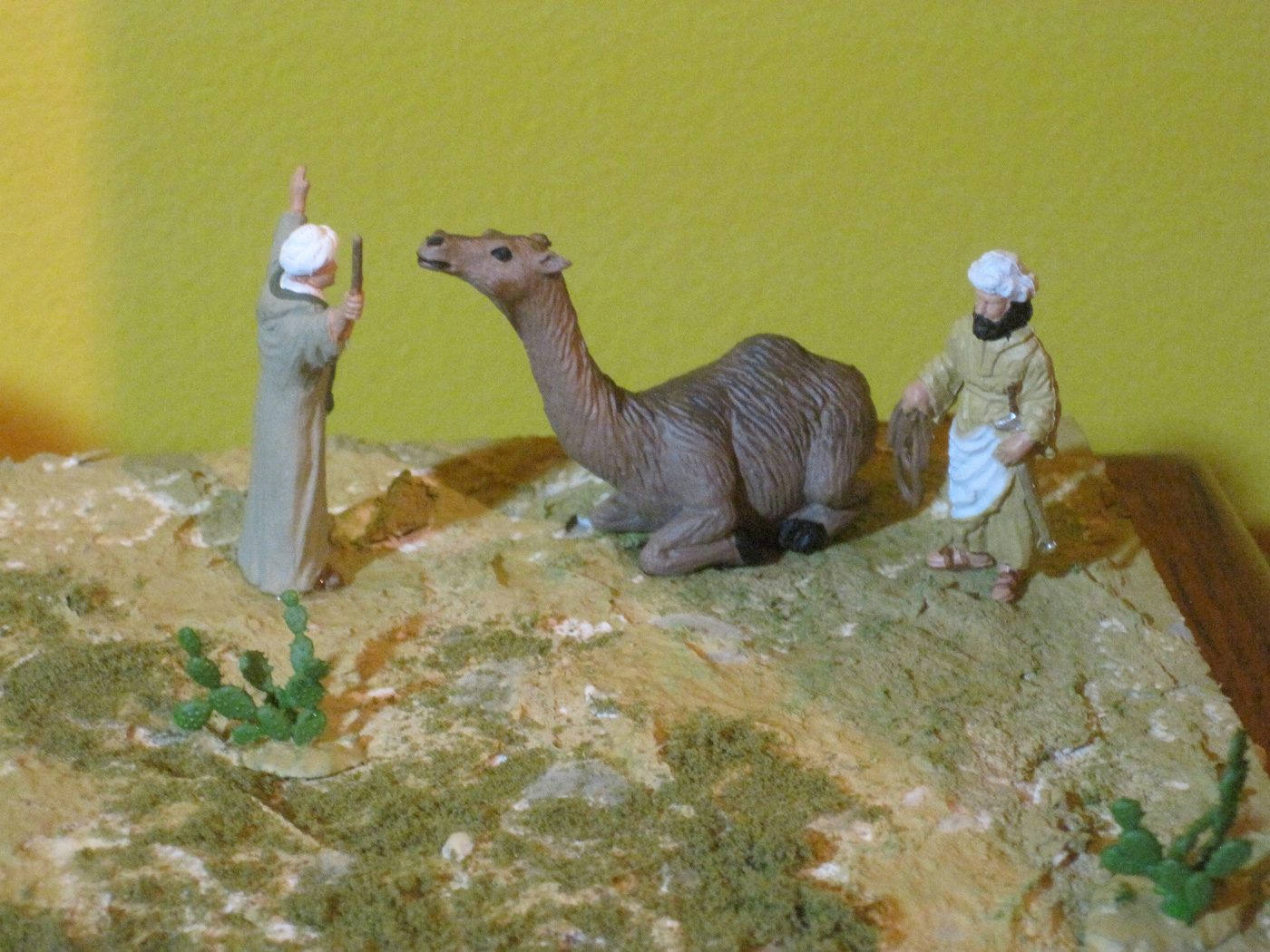
A lot of stories are packed in the diorama. A stubborn camel refuses his masters’ orders to rise to his feet!
I am aware of two books having been written about the Tripoli Grand Prix, the best of which is by Italian author Valerio Moretti. This book, along with numerous internet searches for old photographs, were my primary reference sources in gathering what I would need to construct a diorama of the Start/Finish area, pits and race control tower of the Mellaha circuit. I used wood primarily as the basic material for the tall tower and both the pit and circuit walls. I used thin pine and cardboard of different thicknesses to create a roof over the pits and to cover the different wood structures of the tower.
Wood glue, epoxy, white paint (diluted to form a wash) was used several times over in order to give the tower the feel that it was made of limestone and concrete blocks which were still very much the primary construction materials used for homes and buildings when I lived in Libya in the 1960’s. Nails and plastic tubing were used for most of the window bars and railings. I had this one great, giant date palm tree I had purchased over a dozen or more years earlier from a hobby supply store which I knew would one day serve as part of a Mellaha diorama and I was glad to have kept it all those years. This became the distinctive tall palm one sees on all photographs of Mellaha on the same side as the large grandstand, casting its shadow across the track.
Cars in 1-43 scale, to re-constitute the complete starting grid of one of those 1930’s races, were going to prove a problem. The German Auto Union and Mercedes-Benz marques dominated the Tripoli Grand Prix and it was relatively easy to find a number of these in die-cast model form to modify as needed but there were few if any replicas of the early Maserati, Alfa Romeo or French and British cars which sometimes made their way onto the grids of these years.
Consequently, I settled on an interim solution which was to try and assemble a grid which would show each make and model car I could find which had at one time raced at Tripoli. What resulted is not a grid of specific cars which raced at Tripoli but rather, a grid that has examples of the latest or most recent car make/models at the front of the grid and the earliest ones at the back. A few figures on the track are recognizable, Tazio Nuvolari in gray pants, yellow shirt, and red leather helmet standing near an Alfa Romeo, Hans Stuck strapping on his helmet, Alfred Neubauer strolling near the pit wall, and Marshal Italo Balbo with a beard and Khaki uniform up in the VIP spectator area overlooking the track.
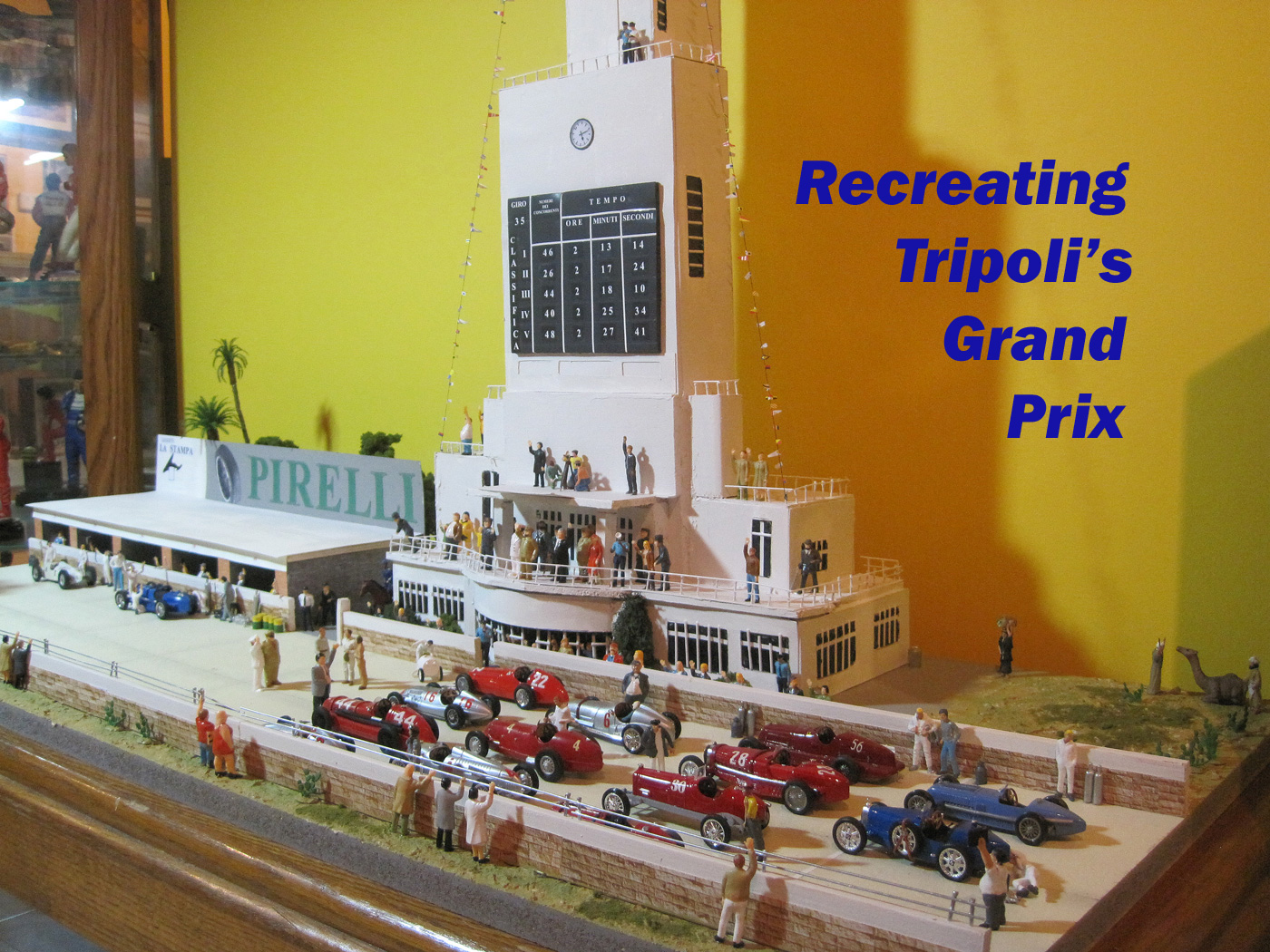
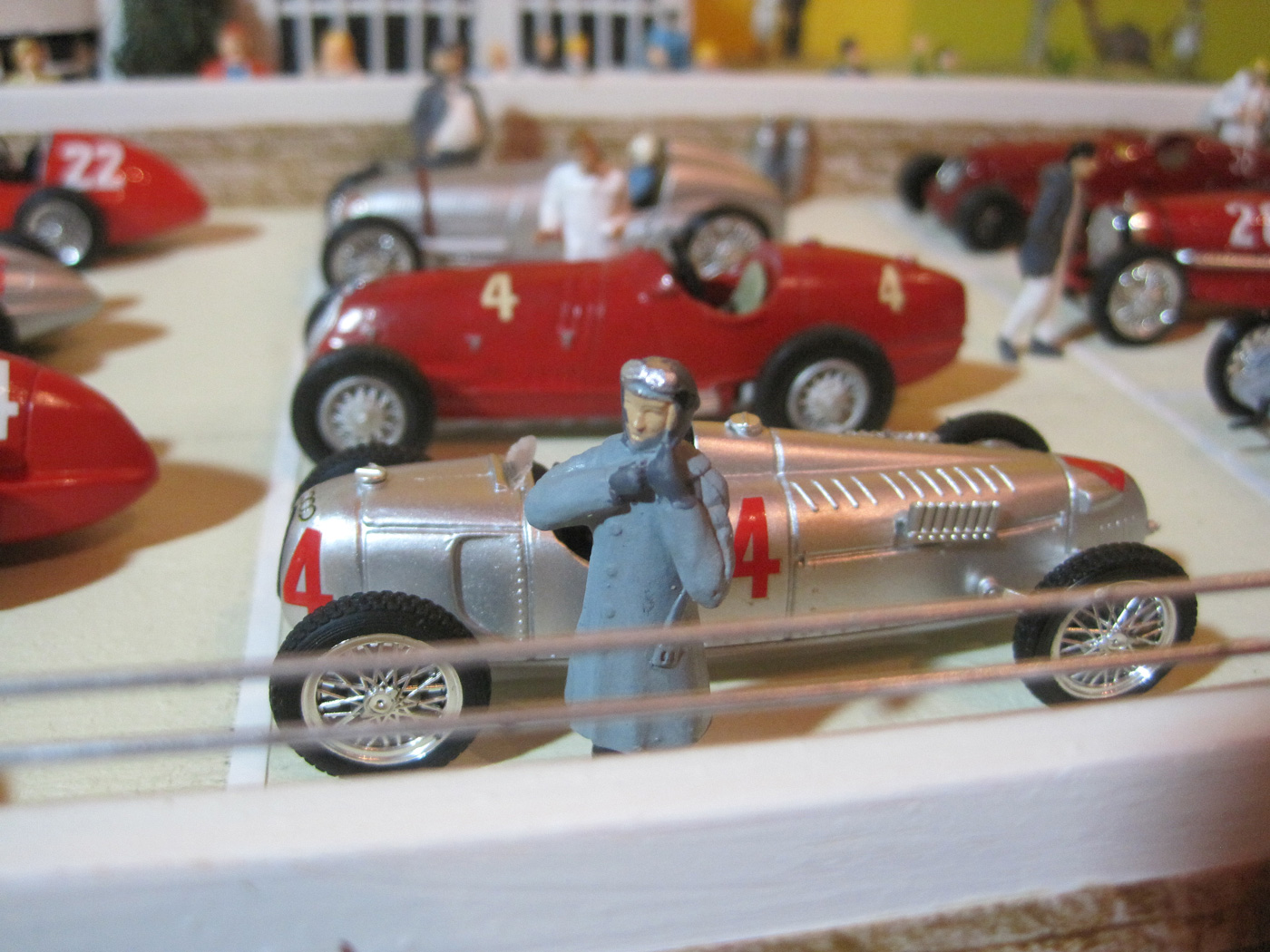
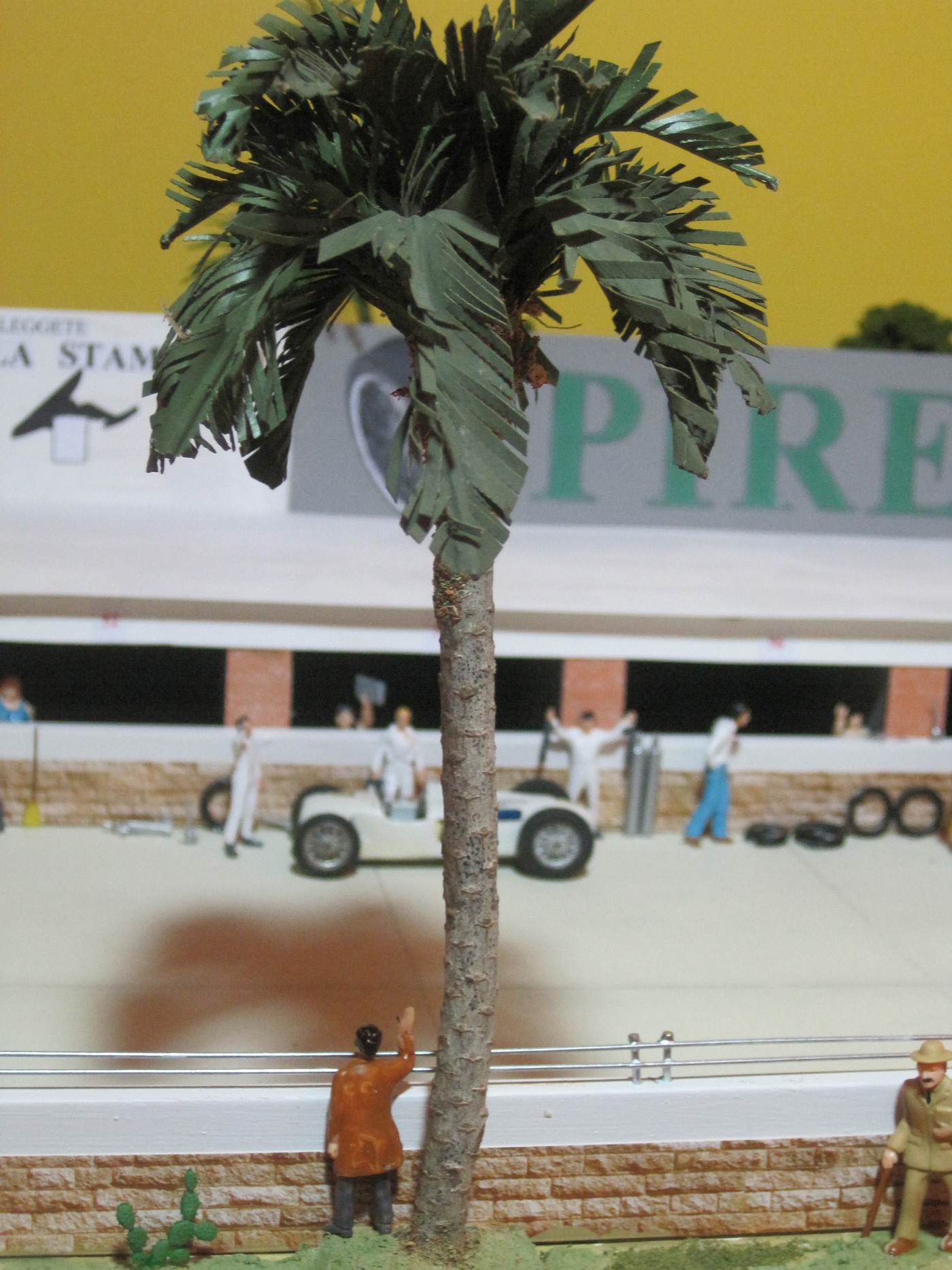
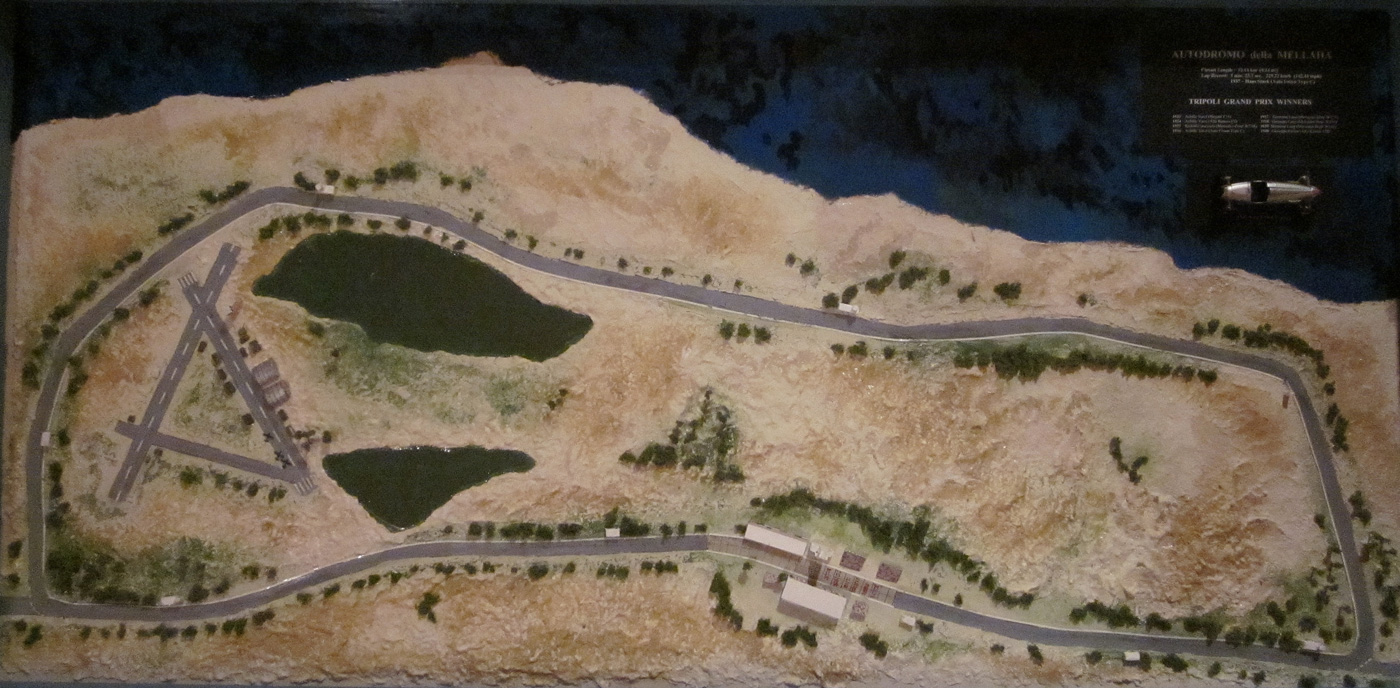
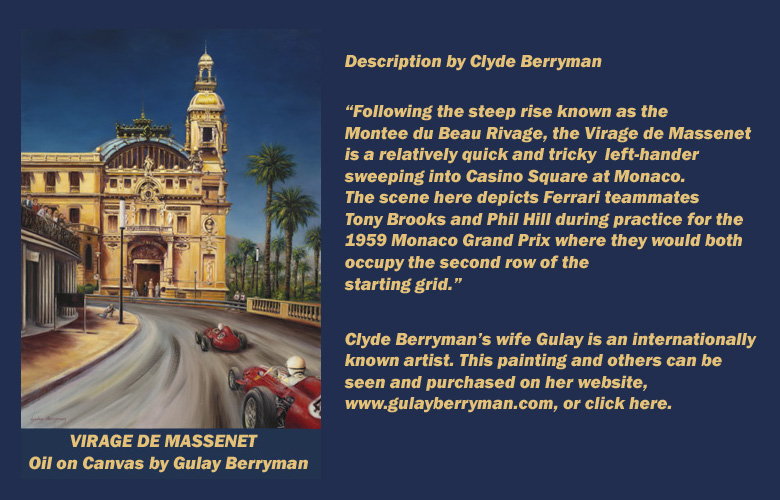
Great work with a lot of love for your Mellaha diorama, Clyde. Molto bravo!!! And also a great story about the Tripoli Grand Prix. Thank you, Renzo
Absolutely awesome. I have always been fascinated by dioramas of all sorts, and the obvious effort behind this one is incredible. Wonderful story!
Quite brilliant. Many thanks. I can almost feel the dessert sand.
Robert Mansfield
at the first chantilly concours there was a stand with a company which would build dioramas to order. I communicated with them a few times re a scene at the bivio polizzi (?) in the targa florio with my lancia zagato but couldn’t get a response involving the traditional ‘ballpark figure’ of the expense involved. I do have a 1/43 of that curve with a ferrari that was commercially available at a reasonable price; decades ago, of course!
For Renzo, your name triggers a memory directly linked to the early stories I heard of the Tripoli Grand Prix. In the early 1960’s, Brunswick opened a bowling alley just opposite the Tripoli Golf Club. It was a good investment. The many American expatriates involved in the oil industry immediately formed a bowling league and the place was packed. It was owned by two partners, Renzo (Italian) and Zak (Lebanese). Renzo had movie star good looks, flashing white teeth , drove a red Alfa Romeo sports car, and always had two or more very attractive girls hanging on to his shoulders. He was the PR side of the business, super-friendly and outgoing…I thought Renzo was great! Zak took care of checking out bowling balls, shoes….nice guy, but a bit more sedate and serious. I distinctly remember it was at this bowling alley that many older Italian residents came to watch this curious new American game of bowling….and it was they who had so many stories about the ‘Glory Days’ of the Tripoli Grand Prix back in the 1930’s!
Thanks David, Robert and Toly for your kind words. This diorama required a lot of woodwork at which I am not especially expert – I like the finishing and detailing after the difficult or ‘messy’ part of diorama building is done…:)) Also was frustrated about not being able to easily duplicate a particular race since so many car models in 1/43 were not available….only a few as very expensive kits.